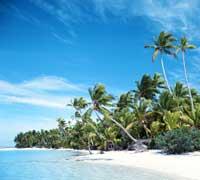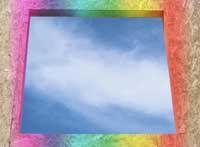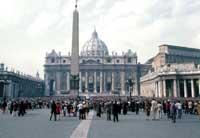Looking for the bluest sky around the world
2006/08/20 Rementeria Argote, Nagore - Elhuyar Zientziaren Komunikazioa

The bluest sky is therefore found in Brazil, followed by New Zealand, Australia, Fiji and South Africa. To see the bluest skies in the world, therefore, we have to go quite far—remember that research has been conducted through a contest organized by a travel agency.
We would say that no one has been angry because they have not brought Euskal Herria among those five peoples who have the bluest sky, but just in case it had no possibility, not because it does not have the blue sky, but because they did not even in the sack of the peoples visited. This bag had twenty territories that had to put the border and could not visit all the places of the world: Madagascar, Japan, Thailand, Cambodia, Maldives, Los Angeles, San Francisco, Alaska, The Caribbean, Peru, Egypt, Italy, Morocco, Maldives, Ireland, Scotland, Wales. Therefore, the traveler has visited these twenty places.
Colorimetry: measuring colors

At first, the main intention of the travel agency was not to conduct scientific research, of course, to make itself known. But they met the competition at the National Physics Laboratory (NPL) and saw that it was a good opportunity to take measurements seriously. This laboratory sets standards for physical units such as kilogram, meter and second, as well as color measurement in colorimetry. As for the measurement of celestial blue, from the point of view of physics, the wavelength and intensity of light is measured with a spectrometer. Thus, the NPL designed a spectrometer for the contest, especially for measuring the color of the sky, portable and easy to use.
Therefore, the traveler has been with a spectrometer on the back, it is a way of saying it. In each of the places where he went, he prepared all the tools, performed the measurement and sent the result by email to the NPL. There it was certified that the measurement was correct and all data were collected. Once the trip was completed, that is, when they had all the data, they were placed in a graph and determined the territory in which the bluest sky was obtained.

To make the decision they took into account that a certain color is in itself a mixture of basic colors, between red, green and blue. Each color (in this case each blue of the sky) has a certain proportion of basic colors. As they looked for the bluest sky, they aimed at the sky with the highest proportion of blue, and according to the spectrometer the bluest sky is that of Brazil, at least at the time of measurement.
Another fact to finish, the country furthest from being the bluest sky (among these twenty) is England. We are closer to England than to Brazil, and we are, if the color of the sky will not be similar.
Published in 7K.



